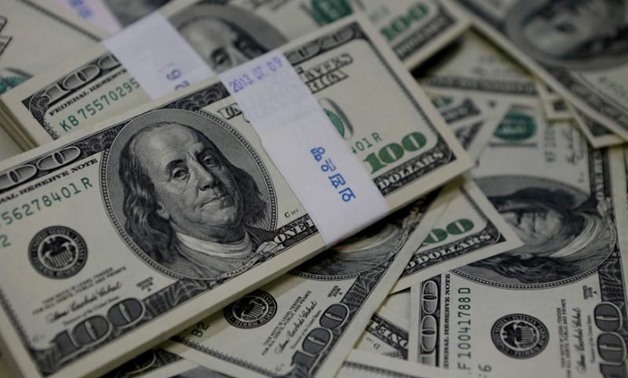
U.S. one-hundred dollar bills are seen in this picture illustration, August 2, 2013 – REUTERS/Kim Hong-Ji/Illustration
TOKYO - 14 March 2018: The dollar wallowed against the yen and other major currencies on Wednesday after the sudden dismissal of U.S. Secretary of State Rex Tillerson killed off an earlier bounce in the currency.
U.S. President Donald Trump fired Tillerson on Tuesday after a series of rifts over policy on North Korea, Russia and Iran, replacing his chief diplomat with loyalist CIA Director Mike Pompeo.
It was a repeat performance for the currency market and the dollar, which declined a week ago when the resignation of White House economic advisor Gary Cohn undermined investor confidence in the greenback.
The dollar was down 0.15 percent at 106.440 yen , having slipped overnight from a two-week high of 107.300 reached after wariness over a political controversy in Japan waned slightly.
The greenback also lost a bit of traction after February U.S. inflation data out on Tuesday matched expectations, suggesting the Federal Reserve remained on track to raise interest rates at a gradual pace.
Masafumi Yamamoto, chief forex strategist at Mizuho Securities in Tokyo, said comings and goings in the White House were becoming something of an everyday occurrence and that dollar’s reaction was likely to become more limited each time.
“For the dollar to rise above 107 yen again, it may need a clarification of the ongoing political ‘scandal’ in Japan in addition to a hint by the Fed at this month’s meeting that it might accelerate the pace of rate hikes,” Yamamoto said.
The yen had risen against the dollar at the start of the week as a political crisis engulfed Japanese Prime Minister Shinzo Abe and his close ally, Finance Minister Taro Aso.
The Japanese currency advanced as the controversy over alleged cronyism in a government land sale raised doubts about Abe’s ability to continue pursuing his Abenomics policies, which include aggressive monetary easing.
The Fed holds a two-day policy meeting starting on March 20 and the central bank is widely expected to raise interest rates for the first time this year.
Tracking a decline in U.S. debt yields, the dollar index against a basket of six major currencies slipped to a six-day low of 89.565.
The index managed to cling above 89.407, the low point for March set last Wednesday in the wake of Cohn’s exit.
“The dollar has not declined very much despite recent negative factors as sentiment is showing signs of recovering globally, with words like Goldilocks being mentioned again,” said Shusuke Yamada, chief Japan FX strategist at Bank of America Merrill Lynch.
The February U.S. non-farm payrolls report released on Friday pointed towards not too hot nor too cold “Goldilocks” conditions. The report showed a strong increase in employment but at the same inflation fears were moderated by a slowdown in earnings growth.
The euro extended an overnight bounce and was up 0.15 percent at $1.2407 , its highest in six days.
The pound rose about 0.2 percent to a two-week high of $1.3996.
The Australian dollar added 0.1 percent to $0.7870 and in reach of a two-week peak of $0.7898 scaled the previous day on robust business indicators.

Comments
Leave a Comment